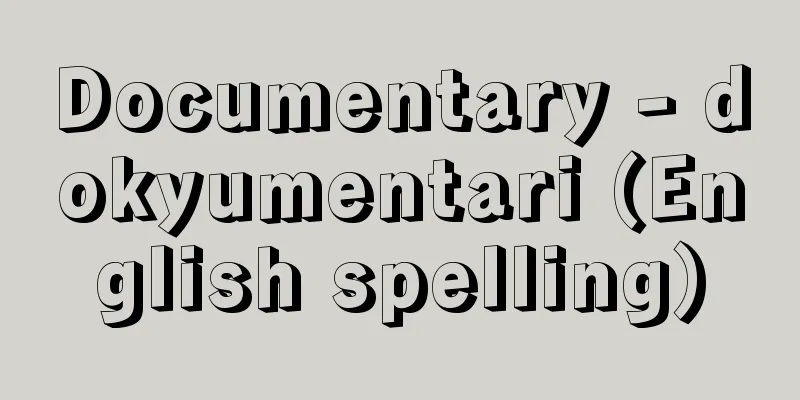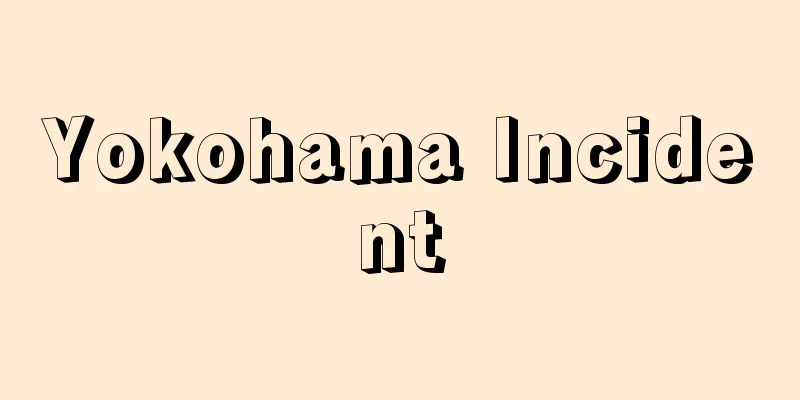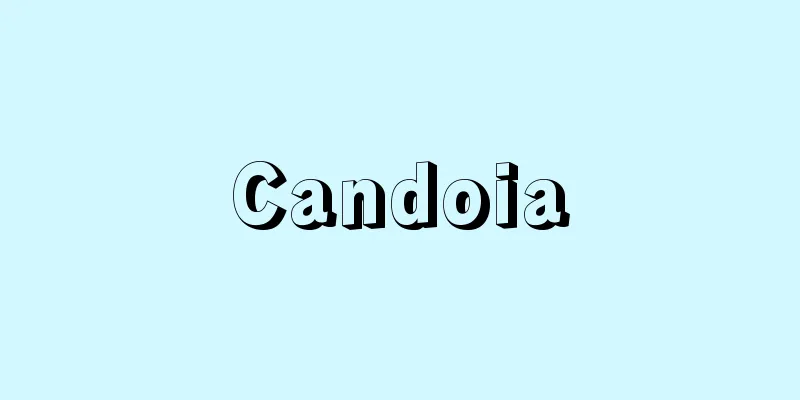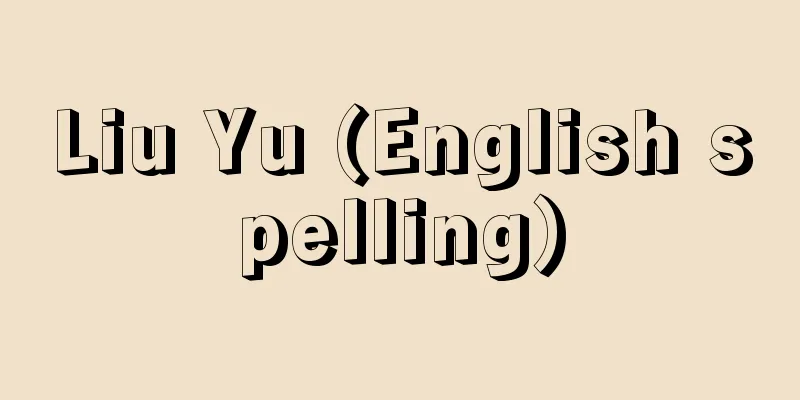Documentary - dokyumentari (English spelling)

|
Document means a record or document, while documentary refers to a representation based on a record of facts. It is a word that refers to documentary literature and documentary films, and can also be used for audio and visual expressions such as radio and television. It was first used in 1926 by the British documentary filmmaker John Grierson (1898-1972). However, when we talk about documentaries, we should generally think of them as including elements of social criticism and social accusation, rather than simply being a record. Themes in documentaries include the political world, such as Matsumoto Seicho's Black Fog of Japan (1960), and social accusations about the "corruption" and "vices" of industrial society, as well as the exposure, denunciation, and criticism of the "dark" parts of society, and they tend to be described as hard-line or socially conscious. The reason why neologisms such as documentary novel and documentary drama, which are difficult to associate with the original meaning of documentary (records and documents), have been created in Japan is probably because the word documentary in Japan is used to describe the method of expression and technique. Saki Ryuzo's novels, beginning with "Vengeance is Mine" (1975), can be called documentary novels, as they are works that assemble a series of murders committed by one man through "documents" such as newspaper reports, police reports, court documents, and original interviews. "Death Row Inmate Nagayama Norio" (1994), which depicts the crimes of Nagayama Norio and the man he is, can also be said to be a work that makes the most of the documentary technique. Yoshioka Shinobu's (1948- ) "Summer of the Crash" (1986) is a typical documentary work that painstakingly reports on the Japan Airlines crash in the mountains of Yamanashi Prefecture, providing a detailed report of the accident and the human drama that followed. Sano Shinichi's "The TEPCO Office Lady Murder Case" (2000) is a realistic documentary work that depicts the darkness in the hearts of modern people, making use of a multifaceted perspective that seeks to prove the innocence of the suspect whom the author believes to be falsely accused, and to get to the humanity of the victim. Rather than simply recording phenomena that appear on the outside, modern documentaries seem to be beginning to attempt to "record" the inner truth of incidents and even the inner phenomena of human hearts. [Minato Kawamura] "Japan's Dark Fog" by Matsumoto Seicho (1960, Bungeishunju Shinsha)" ▽ "Vengeance Is Mine" volumes 1 and 2 by Saki Ryuzo (1979, Kodansha)" ▽ "Death Row Inmate Nagayama Norio" by Saki Ryuzo (Kodansha Bunko)" ▽ "Summer of the Crash - A Complete Account of the Japan Airlines Flight 123 Accident" by Yoshioka Shinobu (1986, Shinchosha)" ▽ "The TEPCO Office Lady Murder Case" by Sano Shinichi (2000, Shinchosha) [References] | | |Source: Shogakukan Encyclopedia Nipponica About Encyclopedia Nipponica Information | Legend |
|
ドキュメントは記録や文献という意味であり、ドキュメンタリーは、事実の記録に基づいた表現物をさす。記録文学、記録映画(ドキュメンタリー映画)などについていうことばであり、ラジオやテレビなどの音声表現、映像表現についても使うことができる。1926年にイギリスの記録映画作家J・グリアスンJohn Grierson(1898―1972)によって用いられたのが初めてである。 しかし、普通、ドキュメンタリーという場合は、単なる記録性だけを問題にするのではなく、社会批判、社会告発などの要素が含まれていると考えるべきだろう。松本清張(せいちょう)の『日本の黒い霧』(1960)のような政治の世界や、産業社会の「腐敗」や「悪徳」についての社会的告発や、社会の「闇(やみ)」的な部分の暴露、糾弾、批判などがその作品の主題としてあり、硬派とか社会派とかいわれる作品傾向が共通してみられる。ドキュメンタリー・ノベル、ドキュメンタリー・ドラマといった、本来のドキュメンタリー(記録・文献)とは結び付きにくい造語がつくられてゆくのも、日本においてドキュメンタリーということばが、その表現方法や手法について語られるものであるからだろう。 『復讐(ふくしゅう)するは我にあり』(1975)に始まる佐木隆三(さきりゅうぞう)の小説は、ドキュメンタリー・ノベルといってよく、一人の男による連続殺人事件を、新聞報道、警察調書、裁判資料、独自の取材などの「ドキュメント(文献)」によって組み立てていった作品である。永山則夫の犯罪とその人間を描いた『死刑囚 永山則夫』(1994)も、ドキュメンタリーの手法を最大限に生かした作品といえるだろう。吉岡忍(しのぶ)(1948― )の『墜落の夏』(1986)は、山梨県山中に墜落した日航機事故を、その事故の詳細な報告と事故後の人間模様までをも丹念に取材し、記録したドキュメンタリーの一つの典型のような作品だ。 佐野眞一の『東電OL殺人事件』(2000)は、著者が冤罪(えんざい)と信じる被疑者の潔白を証明しようということと、被害者の人間性に迫ろうという複眼的な視線が生かされた、現代人の心のなかの闇を描く迫真的なドキュメンタリー作品となっている。単に外側に現れた現象の記録ということだけではなく、現代のドキュメンタリーは、事件の内側の真実や、人間の心の内側の現象までをも「記録」しようという企図をもち始めているようだ。 [川村 湊] 『松本清張著『日本の黒い霧』(1960・文芸春秋新社)』▽『佐木隆三著『復讐するは我にあり』上下(1979・講談社)』▽『佐木隆三著『死刑囚 永山則夫』(講談社文庫)』▽『吉岡忍著『墜落の夏――日航123便事故全記録』(1986・新潮社)』▽『佐野眞一著『東電OL殺人事件』(2000・新潮社)』 [参照項目] | | |出典 小学館 日本大百科全書(ニッポニカ)日本大百科全書(ニッポニカ)について 情報 | 凡例 |
<<: Documentary film - dokyumentari-eiga (English spelling) documentary film
Recommend
Inverness
The capital of the Highlands, located in the north...
Rousset, J.
...The theories are diverse, and there is current...
Carex doenitzii (English spelling)
…[Tetsuo Koyama]. … *Some of the terminology that...
Battle of Panipat - Battle of Panipat
An important battle in Indian history that took pl...
Mount Io
A cone-shaped active volcano (→ stratovolcano) tha...
Georges Ferdinand Bigot
French painter. Born in Paris, he studied at the ...
Bidens frondosa (English spelling)
…[Hiroji Koyama]. . … *Some of the terminology th...
QSS - QSS
Quasi-stellar radio source : A stellar radio sourc...
initial
…Illuminations are also called miniatures. They i...
Mosul (English spelling)
In Arabic, it is called Al-Mawsil. It is the capit...
Prout's hypothesis
In 1815, Prout proposed the hypothesis that "...
Valparaíso (English spelling)
A port city in central Chile facing the Pacific Oc...
Sweatshirt - Kazami
There are two types of outerwear worn by young gi...
Towiański, A.
…In Paris, the greatest intellectuals of the time...
Ullambana offering ceremony
...A memorial service for ancestors held mainly o...









